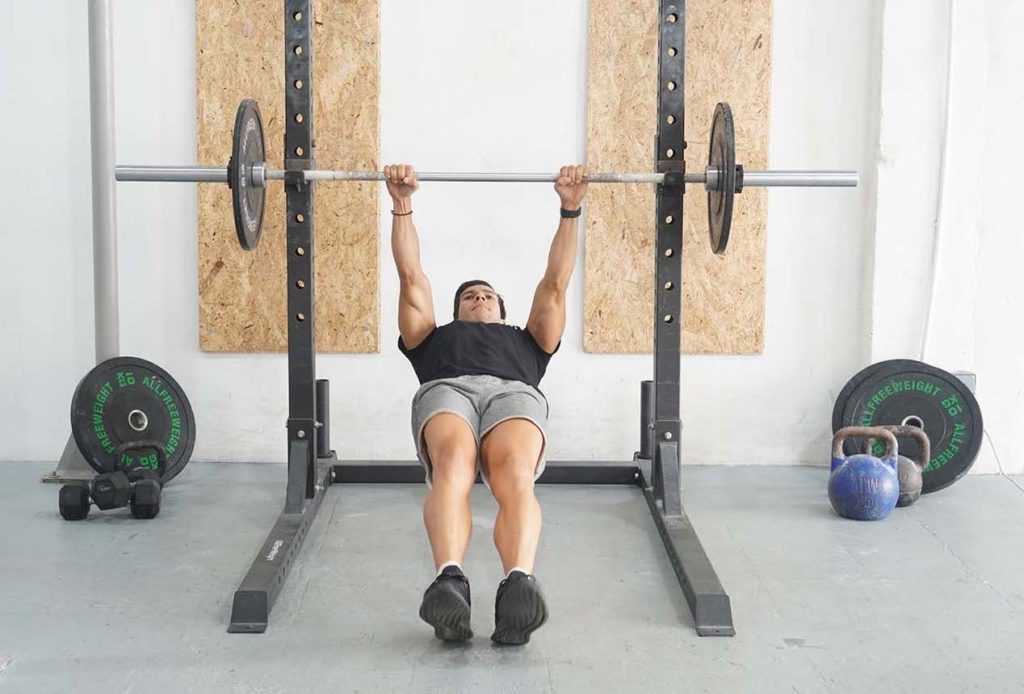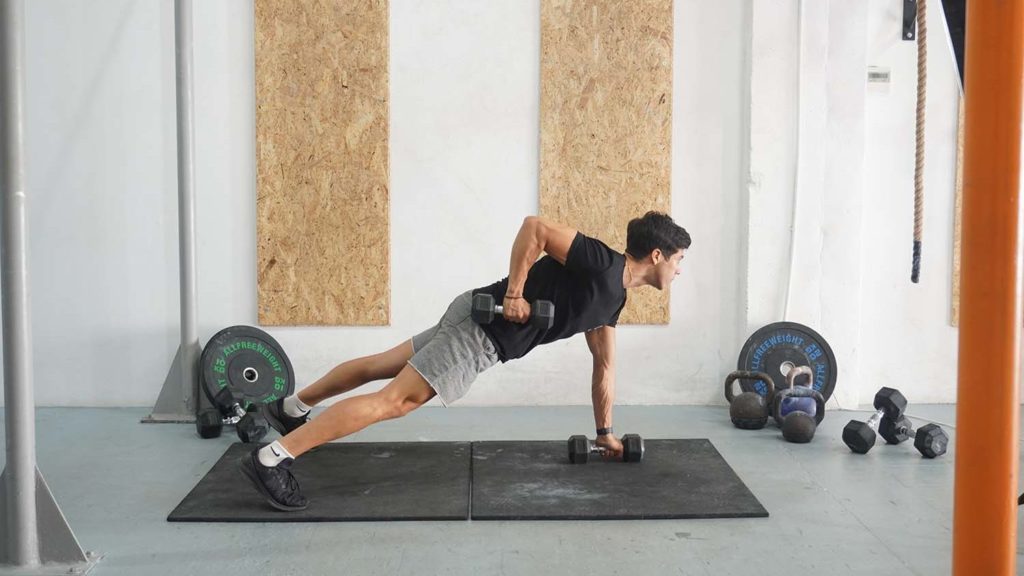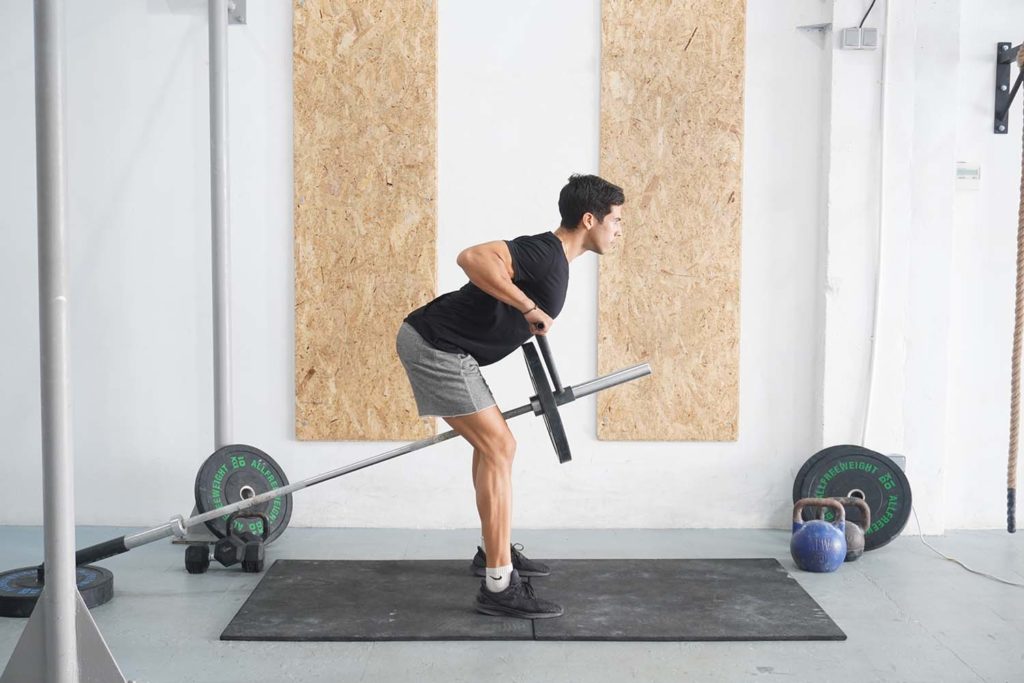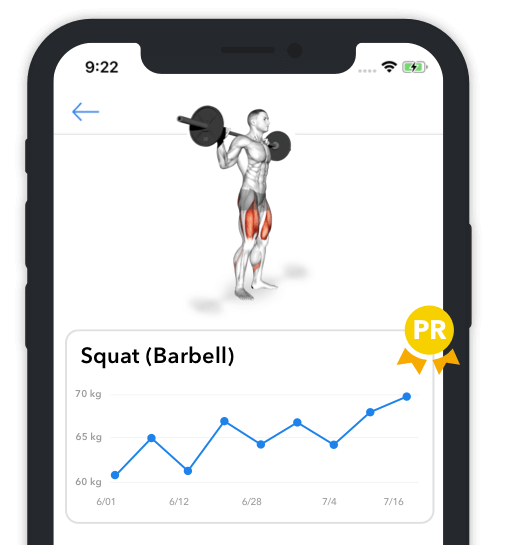What are the benefits of an inverted row?
Inverted rows are an effective bodyweight exercise you can do to strengthen and grow your pulling muscles (the back and biceps). The idea behind inverted rows is to grab onto a bar (such as in a Smith machine) and position your body at an angle. Once in position, begin to pull and lower yourself, similar to how you would during a pull-up. A more horizontal body position makes the movement more challenging to do. In contrast, the exercise gets easier with a more upright torso.
Doing inverted rows is beneficial because you can adjust the difficulty, and the exercise trains a range of muscles simultaneously. Plus, your midsection muscles have to engage to keep you in a rigid position. As a result, you become stronger, more athletic, and better able to handle everyday tasks.
We recommend including the inverted row earlier in your workouts. Inverted rows are a compound movement that requires significant effort to do effectively. So, it’s better to practice the activity while you still feel strong.
How to do an Inverted Row
- Set a bar for the rows at around hip height. A smith machine is a fantastic option because the bar is sturdy, and you can easily adjust the height.
- Grab the bar with an overhand grip and tuck yourself underneath.
- With your arms straight and bar over your chest, extend your body and balance your lower half on your heels.
- Engage your glutes and abs, bring your chest out, and take a breath. Your body should be straight as an arrow.
- Pull through your elbows to bring your body toward the bar. Ideally, you should touch the bar with your chest while having your elbows to your sides but not flared out.
- Hold for a moment as you exhale and slowly lower yourself to the starting position.
What muscles does the inverted row activate?
As a pulling movement, the inverted row primarily trains the back: latissimus dorsi, rhomboids, trapezius, infraspinatus, rear deltoids, and erector spinae (1). Collectively, these muscles keep our shoulders retracted and produce much of the force we need to pull ourselves. For example, the latissimus dorsi plays an essential role in arm adduction and shoulder extension, making it an important muscle in the inverted rows. In contrast, the erector spinae muscle group works isometrically to keep us in position (2).
Our biceps are also involved in the inverted row since their primary function is elbow flexion (3). Meaning, our biceps engage as we pull ourselves to the bar.
The core musculature also engages to keep us in position during the movement. Our rectus and transverse abdominis, obliques, and glutes flex isometrically.
Proper Technique when doing an Inverted Row
The most important tip to keep in mind for the inverted row is to use a full range of motion. Meaning, you should pull yourself until your torso taps the bar and extend your arms on the way down. In doing so, you can better activate your muscles, causing a solid contraction, followed by a stretch on every repetition.

Choosing the appropriate height for the bar is also important. It’s best to start with a higher bar position and a more upright torso. In doing so, you can practice proper technique as you build strength. You can gradually lower the bar and assume a more horizontal torso position as you get stronger.
Keeping your body rigid is also crucial for the inverted row. Your ankles, knees, hips, and shoulders should be in a straight line. In doing so, you can produce force more effectively, perform better, and train the correct muscles.
The final tip to keep in mind for inverted rows is to keep your elbows somewhat tucked. As a result, your shoulders will remain in a safe position, allowing you to engage your lats better.
Variations and Modifications of the Inverted Row
1. Inverted Row with Elevated Feet
The inverted row with elevated feet is an advanced variation that forces you to pull a more significant percentage of your weight. The idea is to place your feet on a gym bench or plyometric box. In doing so, your body is in a declined position, which increases the difficulty.
2. Weighted Inverted Row
Weighted inverted rows are another useful variation for more advanced trainees. The most practical way to do the movement is to put on a weight vest. Alternatively, you can fill a backpack with objects (such as books), put it on, and do inverted rows.
3. Inverted Rows with Slow Negatives
Doing inverted rows with slow negatives is a fantastic way to build back strength and overcome a plateau. The goal is to pull yourself up with a normal tempo but lower yourself for five to ten seconds.
Mistakes to Avoid
A common mistake with inverted rows is shortening the range of motion. Many trainees stop short when pulling themselves and don’t extend their arms fully. Cutting the range of motion allows you to do more repetitions but reduces the effectiveness of each one. Avoid the mistake by pulling until your chest taps the bar, then extend your elbows on the way down.
Another significant mistake with inverted rows is using momentum. For example, pulling yourself up explosively, then dropping back to the starting position. Aside from putting unnecessary stress on joints and connective tissues, doing so isn’t ideal because it robs your muscles of much-needed tension. Instead, do each repetition slowly, engaging your muscles as best as you can.
The third mistake to avoid with inverted rows is relaxing your torso and lower body. Doing so makes it more challenging to maintain the correct position and activate the right muscles. So, tense your midsection and glutes as you set up for each set and maintain the position throughout the set.
Similar Exercises to the Inverted Row
Renegade Row

The renegade row is a full-body exercise that emphasizes your pulling muscles. Similar to inverted rows, a range of muscles contract to keep you stable, and your upper back works to pull the weight. The goal is to assume a push-up position and support your upper body on a pair of hexagonal dumbbells. Once in place, you must tilt to one side and row the dumbbell with your opposite arm.
T Bar Row

The T bar row is a compound exercise that allows you to train your back and biceps with a significant amount of weight. The goal is to use a T row station or landmine attachment for a regular barbell. You then bend over the weight, grab it, and lift it off the floor. With your torso almost parallel with the floor, you pull the weight to your stomach before extending your arms.

